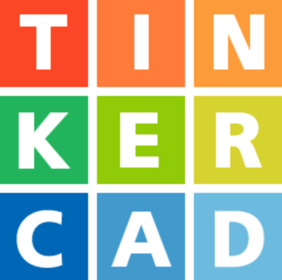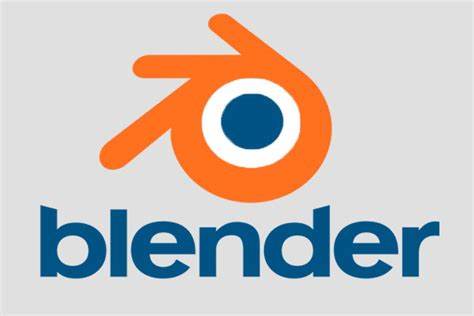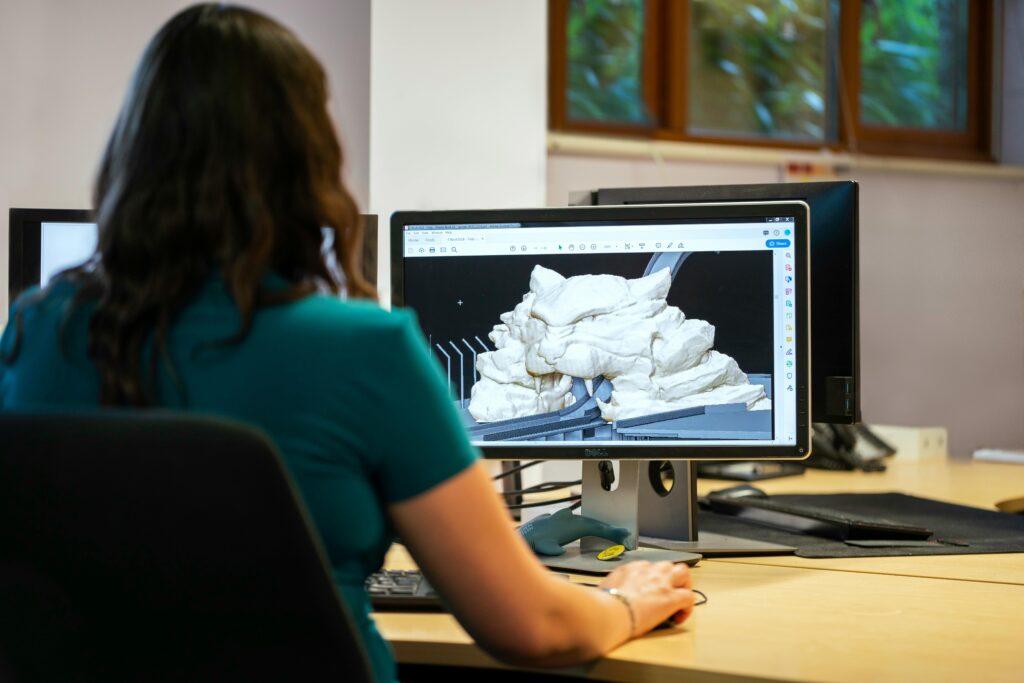-
 VISIT SITE
VISIT SITEA web-based tool known for its user-friendly interface and drag-and-drop simplicity, ideal for beginners.
- Easy to use
- Built-in tutorials
- Strong online community
-
 VISIT SITE
VISIT SITEA comprehensive tool by Autodesk that combines CAD, CAM, and CAE capabilities, suitable for both beginners and advanced users.
- Intuitive interface
- Cloud-based collaboration
- Extensive learning resources
-
 VISIT SITE
VISIT SITEA powerful open-source software with robust modeling, rendering, and animation capabilities, popular among artists and designers.
- Free and open-source
- Advanced features
- Active community
-
 VISIT SITE
VISIT SITEAn open-source software that offers parametric modeling and is suitable for various disciplines like engineering and architecture.
- Free and versatile
- Parametric modeling
- Extensive documentation
Summary
- Introduction to 3D Modeling Tools: Emphasizes the importance of 3D modeling software in the 3D printing process, offering flexibility, visualization, customization, and collaboration.
- Top Beginner-Friendly Programs: Recommends Tinkercad, Fusion 360, Blender, and FreeCAD, detailing their features, ease of use, and suitability for beginners.
- Choosing the Right Software: Provides criteria for selecting 3D modeling software, including ease of use, feature set, compatibility, learning resources, and cost.
- Getting Started and Overcoming Challenges: Offers a step-by-step guide to starting with 3D modeling and strategies to overcome common challenges, such as complexity, precision, and hardware limitations.
Introduction to 3D Modeling Tools for Printing
In the realm of 3D printing, the ability to create and manipulate digital 3D models is a crucial skill. As a beginner, navigating the world of 3D modeling software can seem daunting, but fear not! I’m here to guide you through the process, exploring the best tools and techniques to bring your ideas to life.
3D modeling software allows you to design, sculpt, and manipulate virtual objects, preparing them for the 3D printing process. Whether you’re an artist, designer, engineer, or simply a hobbyist, mastering these tools will unlock a world of creative possibilities.
As we delve into this exciting journey, I’ll introduce you to some of the most beginner-friendly 3D modeling programs, their strengths, and their unique features. We’ll explore step-by-step guides, resources, and tutorials to help you overcome common challenges and accelerate your learning curve.
Why Modeling Software is Crucial for Printing
Before diving into the software itself, it’s important to understand why 3D modeling is a fundamental step in the 3D printing process. Here are a few key reasons:
- Design Flexibility: 3D modeling software allows you to create and modify digital models with incredible precision and flexibility. You can experiment with different shapes, sizes, and textures, making changes on the fly without physical limitations.
- Visualization: These tools provide a virtual environment where you can visualize your designs from every angle, ensuring they meet your desired specifications before committing to the printing process.
- Customization: With 3D modeling software, you can customize and personalize your creations to suit your unique needs and preferences, making each project truly one-of-a-kind.
- Collaboration: Many 3D modeling programs support collaboration and file-sharing, allowing you to work with others, exchange ideas, and benefit from a diverse range of perspectives.
By mastering 3D modeling software, you’ll gain control over the entire design process, from concept to final product, ensuring that your 3D printed creations are precisely what you envisioned.
Top Beginner-Friendly 3D Modeling Programs
Now that we understand the importance of 3D modeling software, let’s explore some of the best options for beginners:
Tinkercad – An easy-to-use 3D tool for beginners
Tinkercad is a web-based 3D modeling tool that has gained immense popularity among beginners due to its user-friendly interface and intuitive design. Here are some key features that make Tinkercad a great starting point:
- Drag-and-drop simplicity: Tinkercad’s drag-and-drop interface makes it easy to create and manipulate 3D shapes, allowing you to focus on your creativity rather than complex tools.
- Built-in tutorials: The platform offers a range of interactive tutorials that guide you through the basics of 3D modeling, ensuring a smooth learning curve.
- Online community: Tinkercad has a vibrant online community where you can share your designs, seek feedback, and collaborate with fellow enthusiasts.
- Integration with 3D printing services: Once you’ve created your model, Tinkercad seamlessly integrates with various 3D printing services, making it easy to bring your designs to life.
Fusion 360: Comprehensive Modeling for Beginners
Fusion 360 is a powerful 3D modeling software developed by Autodesk, known for its comprehensive set of tools and user-friendly interface. While it may seem intimidating at first, Fusion 360 is designed to be accessible to beginners:
- Intuitive interface: The software’s clean and modern interface makes it easy to navigate and locate the tools you need, reducing the learning curve.
- Integrated CAD/CAM/CAE capabilities: Fusion 360 combines computer-aided design (CAD), computer-aided manufacturing (CAM), and computer-aided engineering (CAE) tools in a single package, allowing you to take your projects from concept to reality.
- Cloud-based collaboration: With Fusion 360’s cloud-based platform, you can easily collaborate with others, share files, and work on projects together in real-time.
- Extensive learning resources: Autodesk provides a wealth of tutorials, guides, and online courses to help you master Fusion 360, ensuring a smooth learning experience.
Blender 3D software – A powerful open-source 3D modeling tool
Blender is a free and open-source 3D modeling software that has gained a dedicated following among artists, animators, and designers. While it may have a steeper learning curve than some other options, Blender offers a comprehensive set of tools and features that make it a powerful choice for beginners:
- Robust modeling capabilities: Blender provides a wide range of modeling tools, including polygon modeling, sculpting, and non-destructive modeling, allowing you to create complex and detailed models.
- Integrated rendering and animation: In addition to modeling, Blender offers advanced rendering and animation capabilities, making it a versatile tool for various creative projects.
- Active community and resources: Blender has a vibrant and supportive community, offering a wealth of tutorials, forums, and resources to help you learn and grow.
- Cross-platform compatibility: Blender is available for Windows, macOS, and Linux, ensuring that you can work on your projects seamlessly across different platforms.
FreeCAD software – A free and versatile 3D modeling software
FreeCAD is a free and open-source 3D modeling software that caters to a wide range of disciplines, including product design, mechanical engineering, and architecture. While it may not be as beginner-friendly as some other options, FreeCAD offers a powerful set of tools and features that make it worth considering:
- Parametric modeling: FreeCAD utilizes parametric modeling, allowing you to create complex models by defining parameters and constraints, making it easier to modify and update designs.
- Comprehensive workbenches: FreeCAD offers a range of workbenches, each tailored to specific disciplines, such as Part Design, Sketcher, and Arch, providing specialized tools and workflows.
- Scripting capabilities: FreeCAD supports Python scripting, allowing advanced users to automate tasks and create custom tools and workflows.
- Extensive documentation and community: FreeCAD has a dedicated community and extensive documentation, providing valuable resources for learning and troubleshooting.
Choosing the Right Software
With so many options available, choosing the right 3D modeling software can be a daunting task. Here are some factors to consider when making your decision:
- Ease of use: As a beginner, prioritize software with a user-friendly interface and a gentle learning curve. Tools like Tinkercad and Fusion 360 are great options for those just starting out.
- Feature set: Evaluate your current and future needs. If you’re primarily interested in basic 3D modeling, a simpler tool like Tinkercad may suffice. However, if you plan to explore more advanced features like rendering, animation, or parametric modeling, consider more comprehensive software like Blender or FreeCAD.
- Compatibility: Ensure that the software you choose is compatible with your operating system and hardware specifications. Additionally, consider whether you need to collaborate with others or integrate with specific 3D printing services.
- Learning resources: Look for software with a strong community and abundant learning resources, such as tutorials, forums, and online courses. This will make your learning journey smoother and more enjoyable.
- Cost: While some software like Blender and FreeCAD are free and open-source, others like Fusion 360 may require a subscription or license fee. Consider your budget and long-term needs when evaluating the costs.
Remember, your choice of software is not set in stone. As you gain more experience and your needs evolve, you can always explore alternative options or even combine multiple tools to achieve your desired results.
Step-by-Step Guide to Starting with 3D Modeling
Now that you’ve learned about the different 3D modeling software options, let’s dive into the process of getting started. Here’s a step-by-step guide to help you navigate the initial stages:
- Choose your software: Based on the factors discussed earlier, select the 3D modeling software that best suits your needs and preferences.
- Install and set up: Follow the installation instructions provided by the software vendor, ensuring that you meet the system requirements and have the necessary hardware and peripherals.
- Familiarize yourself with the interface: Once installed, spend some time exploring the software’s interface, menus, and toolbars. Many programs offer interactive tutorials or guided tours to help you get acquainted with the workspace.
- Start with basic shapes: Begin by creating simple shapes like cubes, spheres, or cylinders. Experiment with the various modeling tools and techniques to understand how they work and how they can be combined to create more complex designs.
- Practice, practice, practice: Don’t be discouraged if your initial attempts are not perfect. 3D modeling is a skill that requires practice and patience. Set aside dedicated time to work on projects and explore different techniques.
- Utilize learning resources: Take advantage of the wealth of learning resources available, including official documentation, video tutorials, online courses, and community forums. These resources can provide valuable insights, tips, and tricks to accelerate your learning curve.
- Collaborate and seek feedback: Join online communities or local maker groups to connect with other 3D modeling enthusiasts. Collaborate on projects, share your work, and seek feedback from more experienced users. This can help you identify areas for improvement and gain new perspectives.
- Experiment and have fun: Remember, 3D modeling is a creative pursuit, so don’t be afraid to experiment and explore your artistic side. Try different styles, techniques, and approaches, and embrace the joy of creating something unique and personal.
By following these steps and maintaining a positive and curious mindset, you’ll be well on your way to mastering the art of 3D modeling for 3D printing.
Overcoming Common Challenges
As with any new skill, you may encounter challenges and obstacles along your 3D modeling journey. Here are some common challenges and strategies to overcome them:
- Complexity and learning curve: 3D modeling software can be complex, with numerous tools and features to learn. Start with beginner-friendly software and focus on mastering one tool or technique at a time. Break down complex models into smaller components and tackle them individually.
- Precision and accuracy: Achieving precise dimensions and measurements can be challenging, especially when working with intricate designs. Utilize the software’s measurement tools, guides, and constraints to ensure accuracy. Additionally, practice techniques like Boolean operations and parametric modeling to maintain precision.
- Hardware limitations: Depending on the complexity of your models and the software you’re using, you may encounter hardware limitations, such as insufficient processing power or graphics capabilities. Consider upgrading your hardware or optimizing your workflow by simplifying models or using lower-resolution textures during the modeling phase.
- File compatibility issues: When collaborating or sharing files with others, you may encounter compatibility issues due to different software versions or file formats. Familiarize yourself with the software’s import and export options, and consider using industry-standard file formats like STL or OBJ for 3D printing compatibility.
- Creative block and inspiration: At times, you may experience creative blocks or struggle to find inspiration for new designs. Take breaks, explore online galleries and repositories, and seek inspiration from everyday objects or nature. Collaborating with others can also spark new ideas and perspectives.
Remember, overcoming challenges is part of the learning process. Embrace them as opportunities to grow and develop your skills. Seek guidance from online communities, tutorials, and experienced users when you encounter obstacles, and don’t be afraid to experiment and try new approaches.
Best Resources and Tutorials for 3D Modeling
To aid you on your 3D modeling journey, I’ve compiled a list of some of the best resources and tutorials available:
- Official software documentation and tutorials: Start with the official documentation and tutorials provided by the software vendor. These resources are designed to guide you through the basics and advanced features of the software.
- Online video tutorials: Platforms like YouTube, Skillshare, and Udemy offer a wealth of video tutorials covering various 3D modeling software and techniques. These visual guides can be invaluable for visual learners.
- Online courses and workshops: Consider enrolling in online courses or workshops offered by reputable institutions or industry professionals. These structured learning experiences can provide a comprehensive understanding of 3D modeling concepts and techniques.
- Community forums and discussion groups: Join online communities and forums dedicated to 3D modeling and 3D printing. These platforms allow you to ask questions, seek advice, and learn from the experiences of other users.
- Blogs and websites: Follow blogs and websites dedicated to 3D modeling and 3D printing. These resources often feature tutorials, tips, and insights from experienced professionals and enthusiasts.
- Local maker spaces and workshops: Check if there are any local maker spaces or workshops in your area that offer 3D modeling classes or workshops. Hands-on learning and in-person guidance can be invaluable for beginners.
- Books and e-books: While digital resources are abundant, don’t overlook the value of well-written books and e-books on 3D modeling. These can provide in-depth explanations and serve as valuable references.
Remember, learning 3D modeling is an ongoing process, and the best approach is to combine multiple resources and learning methods to suit your personal preferences and learning style.
Conclusion
Mastering 3D modeling software is a crucial step in unleashing the full potential of 3D printing. By exploring the various beginner-friendly options available, you can find the perfect tool to bring your creative visions to life.
Remember, the journey to becoming proficient in 3D modeling requires patience, practice, and a willingness to learn. Embrace the challenges as opportunities for growth, and take advantage of the wealth of resources and communities available to support your learning.
Whether you’re an artist, designer, engineer, or simply a curious hobbyist, the world of 3D modeling offers endless possibilities for self-expression, innovation, and problem-solving. So, choose your software, dive in, and let your creativity soar!
This post was crafted with the support of AI to provide you with the most accurate, high-quality, and up-to-date content.


Pingback: 3D Printed Prosthetics: Revolutionizing Mobility - Future Print Tech